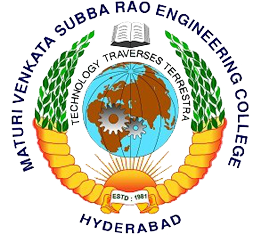|
AICTE Mandatory Disclosures
20. Best Practices Adopted
|
|
BEST PRACTICE : 1. Title of the Practice – Annual Faculty Performance Assessment (View Sample FPA Form) 2. Objectives of the Practice: The effort involves obtaining quantitative assessments of various functions of a teacher so as to arrive at an overall index of his/her performance. This index will provide feedback to teacher on the aspects in the instructional practices to be addressed to evolve as a better teacher and also play a better role in the growth of the institution. The assessment includes various components that define the role as a teacher in a technical institute. The main objectives are to: i.Make faculty be aware of the various important components of the duties of a teacher in an engineering college ii.Help improve certain functions by additional / focussed efforts iii.Participate effectively towards attaining the Vision and Mission of the department as well as of the College. 3.The Context: Teaching is one function that is difficult to quantify, as the logic behind such quantifications are prone to debate in academic circles. It is one of the reasons why most institutes desist from making such effort, and generally restrict to some qualitative indices like Good, Moderate etc. However, if there are many functions expected of teachers, the quality attributed to each needs mapping to certain numbers in the process of arriving at an overall qualitative index. If there are many parameters under each function, the overall qualitative index loses significance, and teachers display indifference of sorts to such outcome. In the changing scenario of technical education, like introduction of outcome based education, going through various types of accreditations, opinion polls by various stakeholders, there is currently a greater need for pinpointing the areas for improvement of teachers in order to collectively contribute to the qualitative progress of the institution. Administration prefers a quantitative index to provide incentive to good performers, and to counsel others. In this context, the college evolved a Faculty Performance Assessment.
At the end of each academic year, each faculty member is required to complete a Faculty Performance Assessment (FPA) format, which is currently online. The format consists of Parts I & II. Part I contains data of subjects handled in the two semesters, projects, publications, Research projects taken up, major administrative functions in the previous academic year, and the works planned for the ensuing year. It also contains a quantitative rating of the teacher by the HOD on six different traits. Part II is a self-assessment sheet by the teacher, This contains four headings, each having many parameters like those listed in brackets, which are:
Student opinion Poll is a long-established practice in the college [Section 6.3.5] Each parameter is self-assessed by the teacher and also assessed by the HOD, after due verification. Obtaining an Overall index: The total values obtained for the above four heads and the assessment of the HOD from Part I are entered in a table. Each of the above five heads is given a weightage, which are different for Asst. Prof. from those of Associate Prof. or Professor. The totals are assigned due weightages to a single Performance Index. Calculations are performed on-line, and the final results sheet Is available to HOD, and Principal. Principal forwards the same to management for further action. Scores obtained for each function and the overall assessment is made available to the teachers. Faculty who perform poorly in the HOD evaluation in Part I are informed about areas that need improvement. This practice was introduced after deciding on the major heads and parameters in many brainstorming meetings of the College Academic Council, and also Principal with HODs. The finalized format was tested for the opinion of the faculty of all cadres, for inclusion or deletion of any parameters, change in weightage for each head etc. The format was finalized after due concurrence of faculty and management. The format also went through certain evolution each year to reach the current form.
Evidence of success with respect to the FPA practice is seen from the attainment of theobjectives set out initially. Objectives-wise:
After adaption of this practice, it is observed that faculty are aware of all the parameters, and are volunteering to take up duties under each criterion, which is a sea change in their attitude.
Institutional Values and Best Practices
· Common rooms are provided for Girls in each block and women security staffs are employed. Women Protection Cell is in existence to address grievances of women students and staff. A course on ‘Gender Sensitization’ is also being conducted. · AkshayUrja, a conference on energy alternatives and conservation mechanism is organised by the college biannually. Currently 8% of daily power consumption is met by solar power and 9.17% of lighting by LED lights. · Measures like encouraging e-communication, paper conservation, and efforts to recycle are in vogue. · About 7,000 litres per day of waste water from RO plants, and from Sewage Treatment Plant are used for gardening. · College has 30 buses for students and staff to reduce commutation by individual vehicles. · Tree planting activities are undertaken periodically by students and staff to improve greenery. The college spends about Rs.10 lakhs per annum on maintaining greenery in the campus. · To cater to the requirements of differently-abled students, ramps, lifts, toilets for physically challenged are provided. · The management is governed by codified Byelaws in tune with the norms of the Government. Students are provided with code of conduct and academic regulations. Service rules and conditions are made available to staff. · The audited statements of the college for each year are posted on the college website. Decision making process in academics or administration is transparent, by the participation of staff on various committees. · Amongst others, the two best practices in the college are (1) Annual Faculty Performance Appraisal system and (2) Preparation of Laboratory Manuals. · Conscientious improvements in infrastructure and teaching-learning processes have rendered the institution exemplary among technical institutions in the state.
|
|
|



